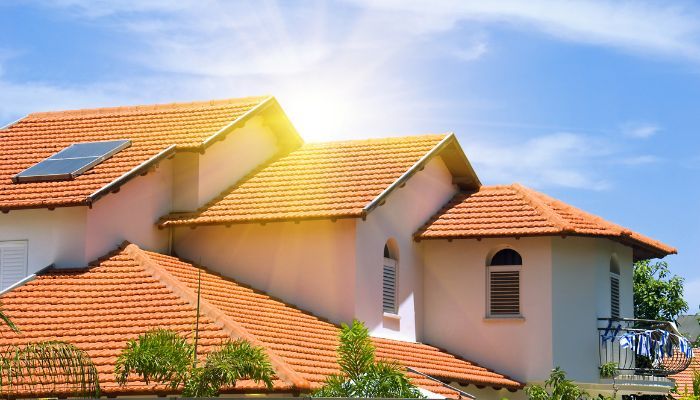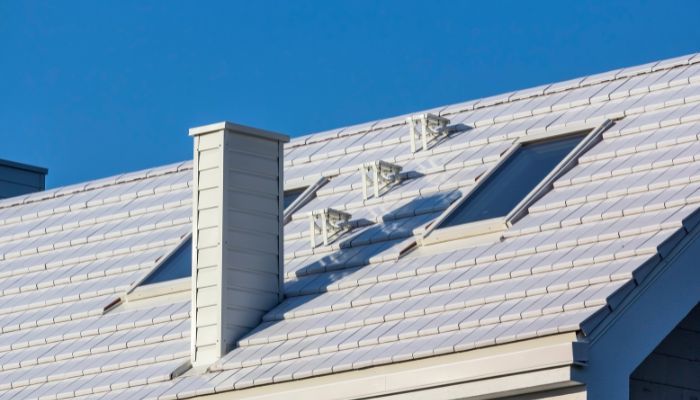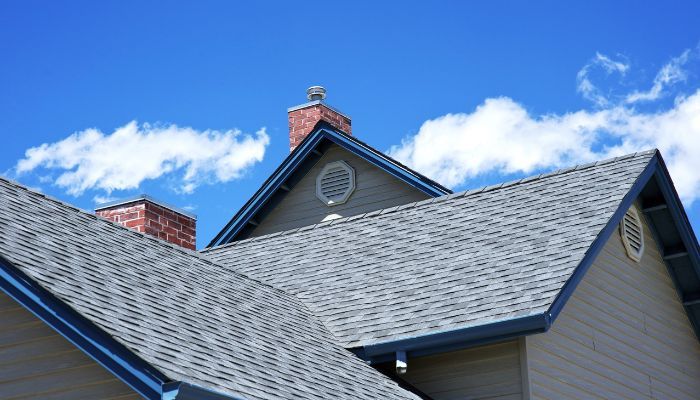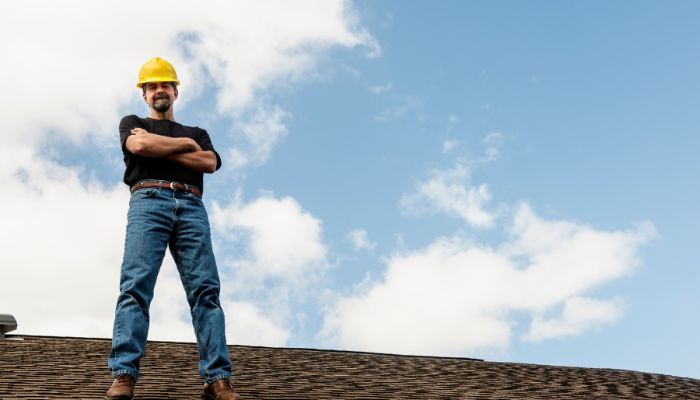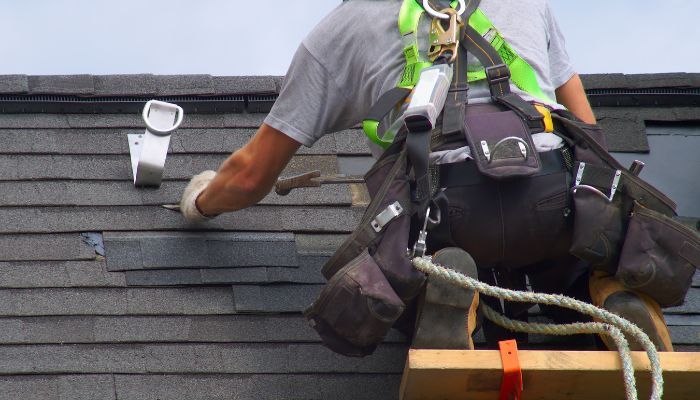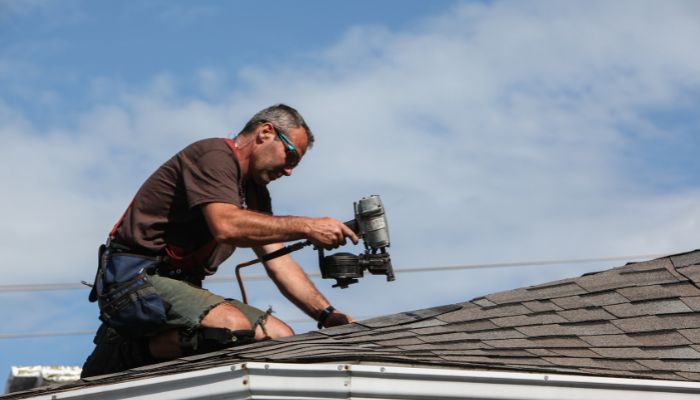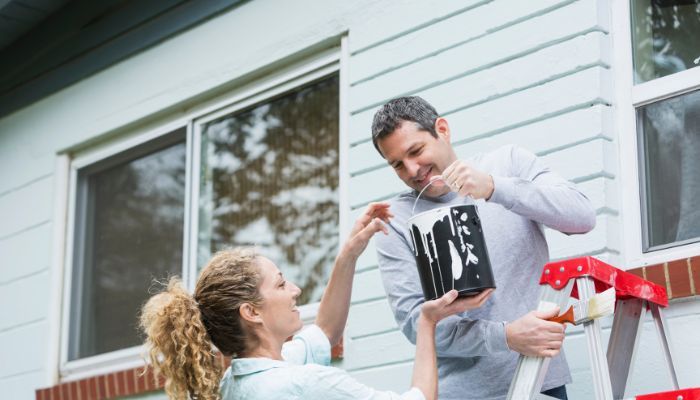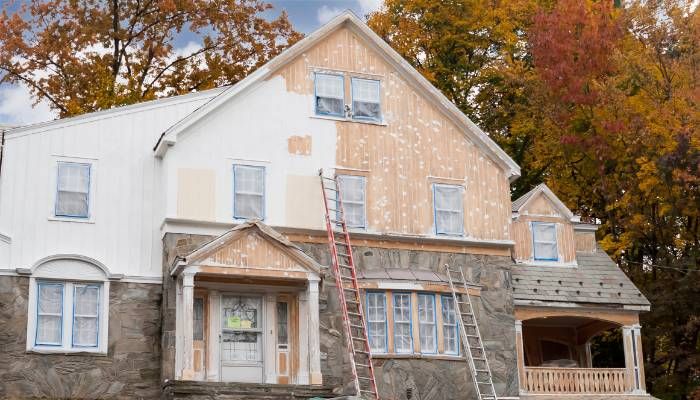The Benefits Of Installing A Roof In Tucson In The Summer
The scorching Arizona sun is no joke. With temperatures soaring into the triple digits, it’s vital to have a roof over your head during Tucson’s sweltering summer months. Installing a roof can help protect you and your family from the elements while also providing additional benefits that you may not be aware of. From energy savings to property value increases, read on to find out why installing a roof in Tucson this summer could be one of the best decisions you ever make!
For most people living in Tucson, AZ, having a reliable roof over their heads is essential for surviving the blazing hot summers. But many homeowners don’t realize how much more they can gain by investing in this important home improvement project. A new or replacement roof can provide valuable protection against extreme weather conditions as well as contribute to significant long-term savings on energy costs.
Finally, adding an attractive and durable roof will greatly enhance the overall look and feel of your home while increasing its market value should you decide to sell in the future. All these factors combined make getting a new or upgraded roof installed before summer arrives a wise decision indeed!
Reasons To Install A Roof In Tucson In The Summer
The summer in Tucson can be incredibly hot and humid, making it essential for homeowners to install a roof in order to stay cool. Not only does a roof provide shade from the sun’s rays but there are many other benefits that come with installing one during the summer season. Let’s take a look at some of the key reasons why you should consider getting a roof installed this summer.
For starters, having a roof will help protect your home from extreme heat damage. As temperatures soar into triple digits, air conditioning bills can skyrocket if there is no proper insulation on the roof. With an insulated roof, however, not only will your house remain cooler, but you’ll also save money by reducing energy costs associated with cooling down your home. Additionally, roofs act as barriers against rain and hail storms which can cause costly damages when they hit unprotected homes.
Another benefit of installing a roof in Tucson during the summer is protection against UV rays. The harshness of the Arizona sun can have severe effects on furniture and carpets in homes without adequate coverage overhead. A good quality material like asphalt shingles can absorb up to 99% of UV radiation while still providing insulation properties to keep your house cool indoors. Plus, these materials come with warranties so you don’t have to worry about replacing them anytime soon!
Finally, installing a new roof provides more than just practical advantages – it adds value to your home too! Since potential buyers typically pay close attention to how well-maintained a property is before purchasing it, having an attractive looking rooftop could give you an edge over competitors when putting your home up for sale or rent. In addition to boosting curb appeal, newer roofs also tend to require less maintenance throughout their lifetime compared to older models which saves both time and money in the long run.
Factors To Consider When Deciding To Install A Roof
When deciding to install a roof in Tucson during the summer, there are several factors to consider. Firstly, it is important to assess the cost-benefit of installing a roof and determine if it’s worth the expense. The amount that would need to be spent on materials and labor should be weighed against any potential energy savings or protection from inclement weather.
Additionally, homeowners should also think about how much time they have available for installation. Depending on the size of the structure, this process can take days or even weeks to complete. It may be necessary to hire professionals to do the job properly and efficiently.
Finally, depending upon local regulations and building codes, certain permits may need to be obtained before starting construction on a new roof. Homeowners will want to make sure they follow all applicable laws and restrictions when tackling such an extensive project. Taking these guidelines into account can help ensure that the roofing work is done correctly and safely without running afoul of local ordinances.
Advantages Of Installing A Roof During The Summer
The advantages of installing a roof during the summer can be quite significant. The hot and dry climate of Tucson in particular makes it an ideal time to install a new roof, as daytime temperatures are usually high enough that they will not impede the installation process. Furthermore, since Arizona summers typically bring very little rain, there is less chance of weather-related delays or complications.
Another advantage of doing this kind of work in the summer months is that contractors may be more willing to offer special discounts for projects completed during slower times for their businesses. This could mean cost savings for homeowners who decide to tackle their project then. Additionally, because many people go on vacation or do other activities during these months, there won’t be as much disruption from foot traffic or other activity around the house while the crew works on the job.
It’s important to note that certain precautions should always be taken when working outdoors in hot weather conditions like those found in Tucson – such as wearing protective gear and staying hydrated – but with proper care, any risks involved can be kept under control. All things considered, taking advantage of the milder temperatures and longer days of summer offers plenty of benefits when you’re looking at getting your home reroofed.
Costs Associated With Installing A Roof In The Summer
Installing a roof in Tucson during the summer can bring many advantages, but it is also important to consider the associated costs. Before making any decisions regarding installing a new roof, homeowners should be aware of all potential expenses they may incur.
The most obvious cost factor when installing a roof in the summertime is that of labor and materials. Depending on the type of material chosen for installation, labor rates may increase due to increased demand during peak construction season. Not only that, but if temperatures are very high during the time of installation, certain materials might not be suitable and thus require additional cooling measures or different types of insulation throughout the process. Additionally, depending on the size of your home’s rooftop area and how complex it is, there could be extra fees from contractors who have to work overtime in order to complete their task quickly and effectively.
In addition to those typical costs for installation, having a roof installed in Tucson during the summer months comes with its own unique set of challenges – namely dealing with heat exhaustion among workers as well as possible damages due to extreme weather conditions like strong winds or heavy rainstorms. Contractors will likely take these kinds of risks into consideration before beginning any project and adjust their fees accordingly; therefore it’s essential for homeowners to ask about such safety precautions prior to signing off on anything.
It’s clear that while there are benefits associated with installing a roof during the summer months in Tucson, there are some related costs which must also be accounted for ahead of time. Homeowners should research local contractors thoroughly beforehand so they know exactly what kind of services they’re paying for and won’t encounter unexpected surprises down the line.
Different Types Of Roofs Available For Installation In Tucson
When it comes to installing a roof in Tucson in the summer, there’re many options available. Each type of roof offers its own unique advantages, so homeowners must decide which option is best for them. In this article, we’ll explore the different types of roofs that are suitable for installation during the hot summer months.
One popular choice among Arizona residents is asphalt shingles. They provide excellent protection from UV and weather damage while also being relatively affordable when compared to other materials. Asphalt shingle roofs come in various colors and have an attractive appearance that adds value to any home. Additionally, they’re easy to install and maintain, making them one of the most common choices for those looking to replace or upgrade their existing roofing material.
Another great option is metal roofing panels. Metal roofs are known for their durability and long lifespan; some brands even boast warranties up to 50 years! This makes them a reasonable investment for those who want something more permanent than asphalt shingles. Metal roofs also offer superior insulation benefits due to their reflective nature, helping keep your home cooler throughout the blisteringly hot summers in Tucson. The downside? They can be quite expensive depending on the brand you choose.
Tile roofs are another good option if you’re looking for something with a bit more character and style than either asphalt or metal roofs can offer. These tiles come in a variety of colors and styles ranging from classic terracotta clay tile designs all the way up to modern concrete slabs. Tile roofs require occasional maintenance but last much longer than asphalt shingles, providing decades of reliable coverage over your head no matter how harsh the elements may be outside. Plus, they look absolutely stunning – adding both beauty and value to any property they grace!
No matter what kind of roof you choose when installing in Tucson during the summertime, make sure you do plenty of research beforehand so that you know exactly what each material has to offer along with its associated costs.. You’ll want something durable enough to handle extreme heat without compromising on aesthetics – after all, your roof plays an important part in defining your home’s overall appeal!
Tips For Installing A Roof In The Summer Heat
When it comes to installing a roof in Tucson during the summer, there are some important tips you should consider if you want your installation to go smoothly. The right materials and techniques can make all the difference when battling the intense heat of the Arizona sun. Let’s take a look at what else needs to be done for successfully completing an install in this part of the country.
One thing that mustn’t be overlooked is choosing the correct type of material for your roof. Metal or clay tiles will be able to withstand the high temperatures better than their asphalt counterparts – not only from a structural integrity standpoint but also with regards to color fading over time. Additionally, lighter colors should be chosen for optimal reflection since darker colors absorb more energy and therefore generate higher temperatures inside the home.
It’s just as essential to pick a contractor who knows how to work effectively in hot weather conditions. It’s best if they have experience working on roofs during summer months before so they know what precautions need to be taken when handling materials such as shingles and tiles that may become brittle due to extreme heat levels. In addition, they should also use proper safety equipment like gloves, goggles and respiratory masks while performing any outdoor labor under direct sunlight.
Finally, scheduling your repair or replacement job correctly is key too – try aiming for cooler times of day rather than midday, which can reduce stress on both workers and materials involved in the project significantly. And don’t forget about smaller details like providing shade tents whenever possible; these provide much needed breaks from punishing rays without having to completely stop progress on whatever task is being worked on at that moment.
Maintenance Tips For A Roof Installed In The Summer
Maintaining a roof in the summer heat is crucial to keep your home safe and secure. With temperatures rising, it’s important that you check for any potential problems or damages that may have arisen from the installation of your roof. This means regularly checking for loose nails, cracked flashing, worn shingles, and other signs of damage. It also means keeping an eye out for debris such as leaves, twigs, dirt, and bird droppings which can clog gutters and downspouts.
To ensure your new roof lasts for years to come despite the intense Tucson summers, there are some basic steps you should take during maintenance:
Firstly, inspect the entire area around your home at least once every three months – this includes both the interior and exterior portions of your house. Keep an eye out for any holes or cracks that could be allowing moisture into your attic space; make sure all windowsills and door frames have been properly sealed; look for evidence of mold or mildew growth on walls; examine chimneys and vents for rust build-up; test flashings around skylights; clean your gutters regularly; trim trees near the house if necessary; get rid of stagnant water pools around the perimeter of your property; and lastly replace missing shingles immediately when found.
Taking these preventative measures will go a long way towards protecting your investment in a new roof while living in scorching Tucson summers. Regular inspections don’t take much time but they can save you money by catching small issues before they become bigger ones. So be sure to stay proactive with routine maintenance checks throughout each season!
Conclusion
It’s clear that installing a roof in Tucson during the summer has its benefits. The process shouldn’t take too long and there are plenty of insulation options to choose from. With warranties available, you can rest easy knowing your investment is protected. As for permits or licenses, it’s best to check with local authorities as regulations may vary depending on where you live.
In conclusion, if you’re looking for an efficient way to protect your home from the harsh west Texas sun in the summertime, then installing a roof should definitely be considered. It will save money in energy costs over time and keep your home comfortable year-round. Plus, with proper maintenance and care, you can ensure that your roof lasts for many years to come!
Don’t hesitate any longer – contact a local licensed contractor like AA Brite today so they can help you evaluate what type of roof would work best for your needs and get started on protecting your property right away!
FAQs
Is It Necessary To Install A Roof In Tucson In The Summer?
Installing a roof in Tucson during the summer months can be beneficial for a variety of reasons. The extreme heat and sun that is experienced in this part of Arizona can cause damage to roofs, as well as the interior of homes if proper protection isn’t taken. There are many advantages to investing in a new roof before temperatures rise too high, including improved energy efficiency and better protection against harsh weather conditions.
The first benefit of installing a roof in Tucson during the summer is that it will provide much-needed insulation from the intense heat of the area’s climate. A good quality roof will reflect much of the sun’s rays away from your home and keep its temperature down, reducing air conditioning costs significantly over time. Additionally, newer roofs tend to have better ventilation systems than older ones, allowing hot air to escape and cool air to enter more easily throughout the house.
Another advantage of replacing an old or damaged roof with a new one is that it provides additional security from potential storms or other natural disasters common to this region. Strong winds associated with thunderstorms can weaken existing structures while newer materials can withstand these forces more effectively, helping protect you and your family from harm. Furthermore, stronger tiles may also help prevent water leakage into attics or basements due to rain or snowfall which could otherwise lead to significant damage repair bills over time.
In light of all these benefits, it becomes clear why taking action now by having a professional team install a reliable roof before temperatures soar would be beneficial for homeowners living in Tucson during summertime. Not only does doing so save money on utility bills but also gives peace of mind knowing that your property should remain safe regardless of what Mother Nature throws at it!
How Long Does A Roof Installation Typically Take?
Installing a roof in Tucson during the summer can provide many benefits, but how long does it typically take? It’s important to know this information before beginning such an undertaking.
When considering the timeframe for installing a roof, there are several factors that may come into play. The size of the project and complexity of the job will affect how long it takes to complete. Additionally, any difficulties encountered along the way could extend installation time further. For example, if weather is uncooperative or materials arrive late, work might be delayed.
Fortunately, experienced contractors should be able to give you an estimate as to how long they expect your particular job will take. This can help you plan accordingly so you’re not stuck waiting too long for your new roofing system to be finished. Furthermore, because contractors have done similar jobs before, their estimates should generally be accurate.
To ensure the most successful outcome possible with minimal delays and disruptions, it’s best to hire a contractor who knows what they’re doing and has experience working on roofs in Tucson’s climate. Doing so will save you time and hassle throughout the process – allowing you to reap all the benefits of updating your roof sooner rather than later.
What Kind Of Insulation Should Be Used For A Summer Roof Installation?
Installing a roof in Tucson during the summer can provide numerous benefits, from improved energy efficiency to increased property value. But for these advantages to be realized, it is important to use the right kind of insulation for your new roof installation.
There are several types of insulation that could be used for a summer roof installation in Tucson. One option is spray foam insulation, which expands when applied and creates an effective barrier against heat transfer. Another type of insulation commonly used in hot climates such as Tucson’s is reflective foil insulation. This material reflects solar radiation away from the home, meaning less heat builds up inside and your air conditioning doesn’t need to work as hard. Finally, there’s fiberglass batt insulation, which has been around for decades and provides excellent sound absorption and temperature regulation.
No matter what kind of summer roof installation you decide on, it’s important to ensure that your contractor uses high-quality materials—this will help guarantee that you get maximum benefit out of your new roof in years to come. Additionally, take time to compare different options before committing to one product or another; this way you can make sure you’re getting the best possible deal while still ensuring top quality performance from your roofing system overall.
Are There Any Warranties Available For Summer Roof Installations?
When it comes to a summer roof installation in Tucson, there are many factors to consider. One of the most important is whether or not warranties are available for this kind of job. It’s natural to want peace of mind when spending money on such an expensive project, so understanding what types of guarantees may be offered can help homeowners make informed decisions.
A warranty typically covers any faults and damages that occur due to workmanship issues during the original installation process. This means if something goes wrong with your roof within a certain period after installation, you could be eligible for compensation from either the contractor who did the job or from a third-party warranty provider. When looking into warranties, it’s important to get as much information as possible about their scope and duration – this will ensure you know exactly what is and isn’t covered.
It’s also worth noting that different contractors offer different levels of warranties depending on their level of expertise and experience. Before hiring someone for the job, ask them directly about the type of warranty they provide so you’re fully aware of your rights should anything go wrong down the road.
Knowing all the facts upfront can give homeowners greater confidence in their decision-making process and help them feel more secure in their investment choices moving forward.
Are There Any Special Permits Or Licenses Required For Summer Roof Installations?
When it comes to installing a roof in Tucson during the summer months, there are some special considerations that must be taken into account. One of these is whether or not any permits or licenses are required for the installation. It’s important to understand what kind of paperwork and documentation may be necessary before beginning the process so that everything can move forward as smoothly as possible.
In most cases, hiring an experienced contractor who has their own set of permits and licenses will take care of this issue quickly and easily. This individual should be familiar with all local regulations pertaining to roof installations, and they might even have access to materials that require additional licensing or authorization. If you’re unsure about your contractor’s qualifications, make sure to ask them directly if they hold any relevant licenses prior to signing on with them.
Ultimately, having the right paperwork ready can help ensure that your summer roof installation goes off without a hitch. Be sure to do your research ahead of time so you know exactly what needs to be completed prior to starting work on your project – this way, you won’t run into any surprises down the road!
Conclusion
It’s clear that installing a roof in Tucson during the summer has its benefits. The process shouldn’t take too long and there are plenty of insulation options to choose from. With warranties available, you can rest easy knowing your investment is protected. As for permits or licenses, it’s best to check with local authorities as regulations may vary depending on where you live.
In conclusion, if you’re looking for an efficient way to protect your home from the harsh west Texas sun in the summertime, then installing a roof should definitely be considered. It will save money in energy costs over time and keep your home comfortable year-round. Plus, with proper maintenance and care, you can ensure that your roof lasts for many years to come!
Don’t hesitate any longer – contact a local licensed contractor today so they can help you evaluate what type of roof would work best for your needs and get started on protecting your property right away!

